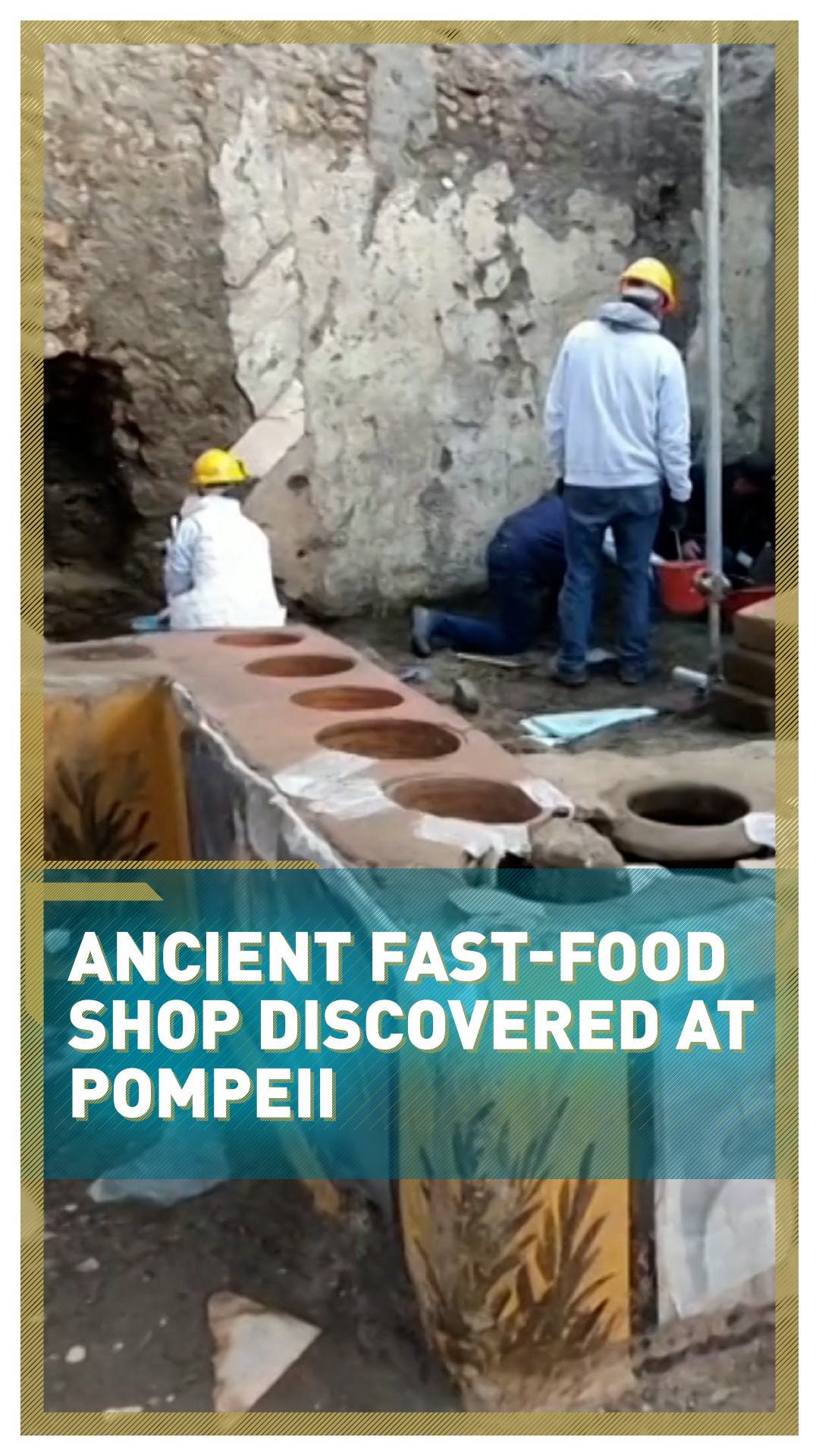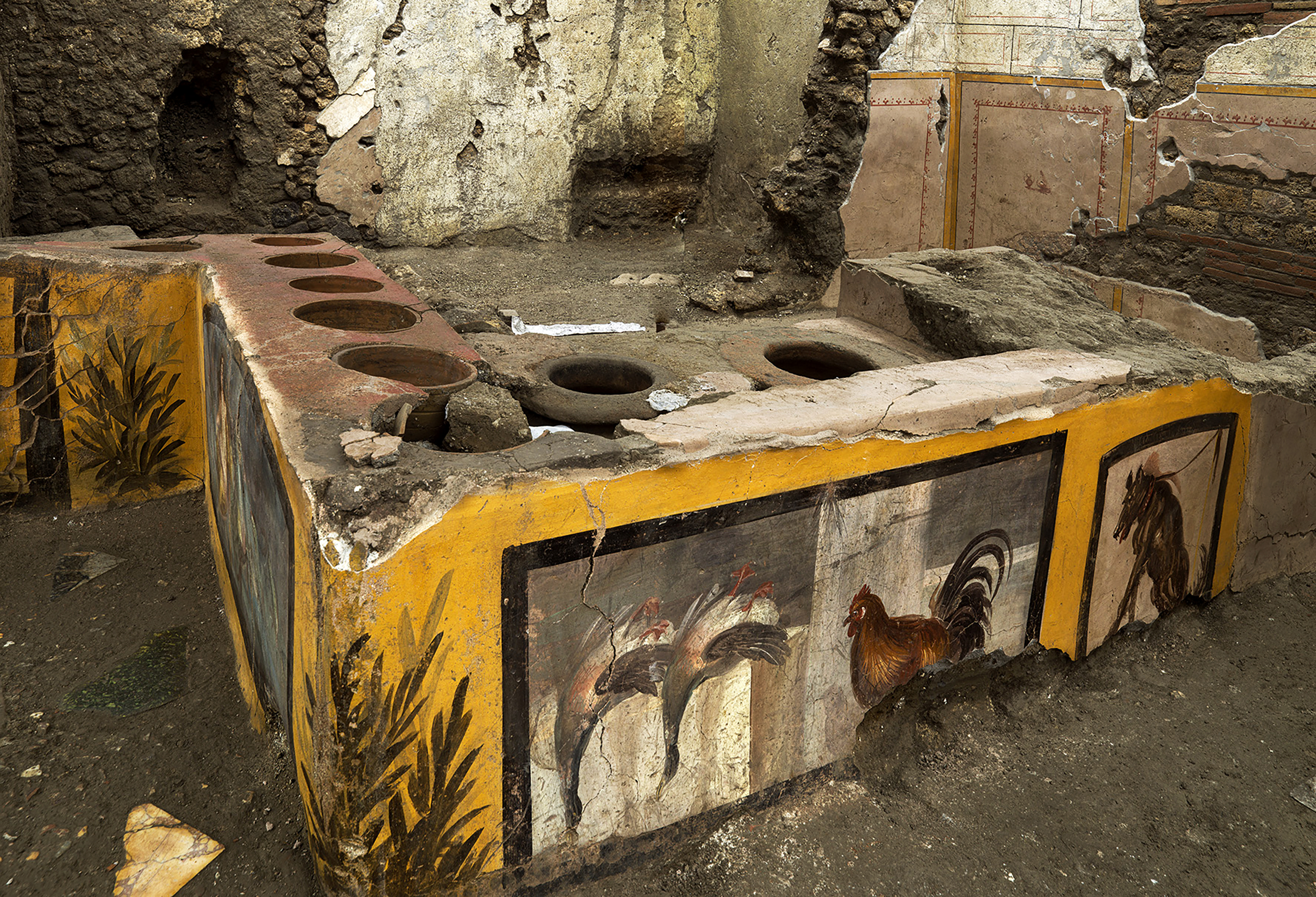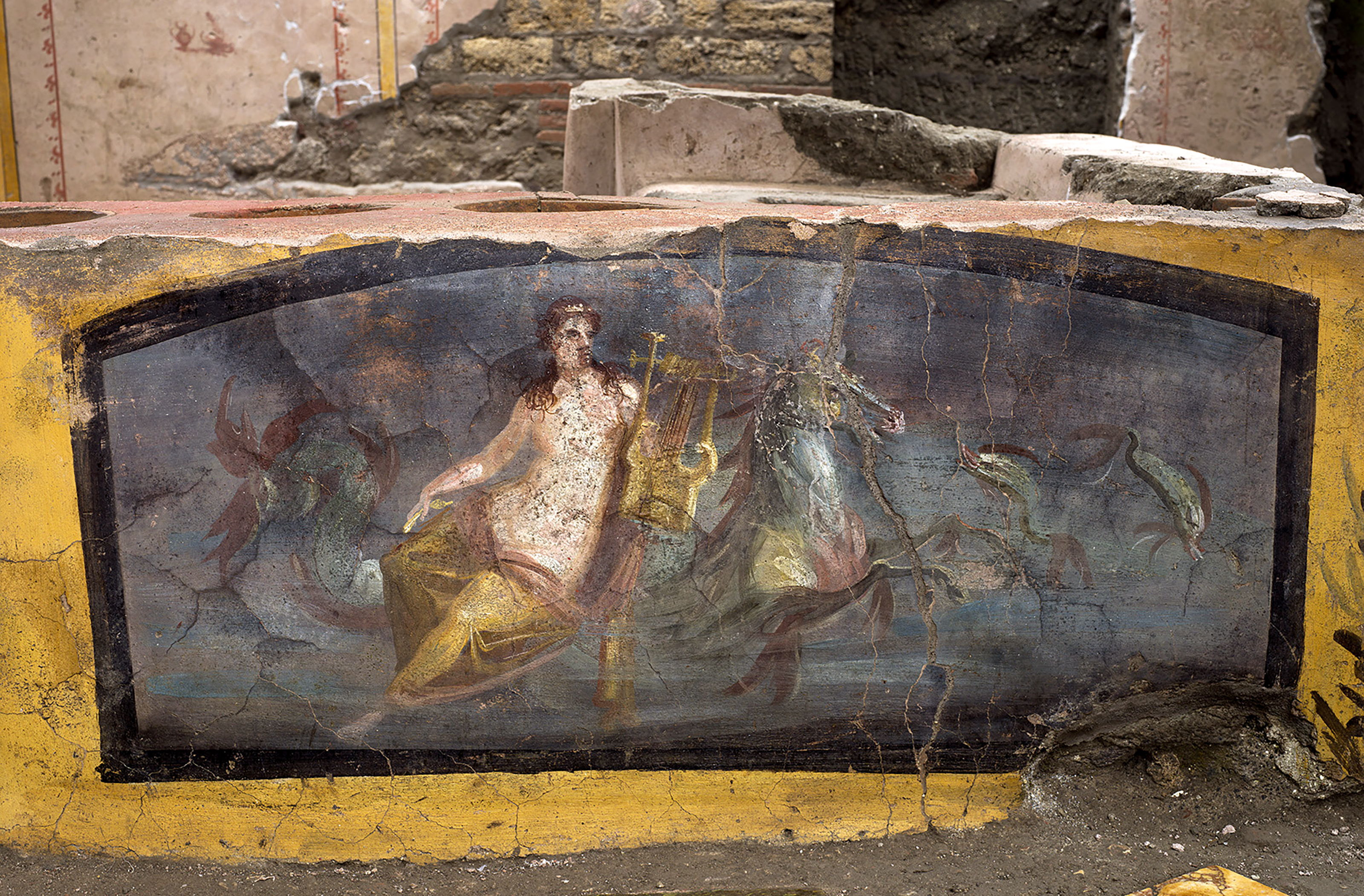01:36

Archaeologists in Pompeii, the city buried in a volcanic eruption in 79 AD, have made the extraordinary find of a frescoed hot food and drinks shop.
Known as a thermopolium, the shop was discovered in the park's Regio V site, which is not yet open to the public, and unveiled on Saturday.
Experts working on the site believe the shop would've been used to serve the ancient version of hot food and drink to Roman passersby.
Remarkably, archaeologists also found traces of 2,000-year-old food, including duck bone fragments and remains of goats, pigs, snails and fish, inside deep terracotta jars shopkeepers once served from.
The front of the counter was also decorated with brightly coloured frescoes, some depicting animals that were part of the ingredients in the food sold, such as a chicken and two ducks hanging upside down.

Archaeologists have discovered an ancient fast food shop amongst the ruins of Pompeii, the city that was buried in a volcanic eruption in 79AD./AFP
Archaeologists have discovered an ancient fast food shop amongst the ruins of Pompeii, the city that was buried in a volcanic eruption in 79AD./AFP
"This is an extraordinary find. It's the first time we are excavating an entire thermopolium," said Massimo Ossana, director of the Pompeii archaeological park.
"When we began excavating this site two years ago we found only one side of the counter - a very beautiful counter by the way - with a nymph riding a seahorse.

Beautiful artwork was uncovered on the front of the shop that archaeologists think may have been dedicated to a famous nearby fountain./AFP
Beautiful artwork was uncovered on the front of the shop that archaeologists think may have been dedicated to a famous nearby fountain./AFP
"Maybe this fresco was dedicated to a nearby fountain because this thermopolium was situated in front of a small square, one of the most beautiful squares of Pompeii."
Archaeologists also found a decorated bronze drinking bowl known as a patera, ceramic jars used for cooking stews and soups, wine flasks and amphora.
About two-thirds of the 66-hectare (165-acre) ancient town has been uncovered. The ruins were not discovered until the 16th century and organised excavations began about 1750.
Video editor: Nuri Moseinco
Source(s): Reuters

